As a passionate gardener, I’m excited to share my expertise on How to plant and grow Akebia.? This charming vine, also known as the chocolate vine, adds a touch of elegance to any garden.
Join me as I guide you through the steps to nurture this beloved plant. From selecting the perfect spot to providing essential care, I’ll equip you with all the knowledge you need for success.
Let’s dive in and explore the world of Akebia cultivation together!
How to Plant and Grow Akebia?
To plant and grow Akebia, start by choosing a sunny to semi-shady spot in your garden. Ensure the soil is sandy to loamy, and enriched with humus for nutrients.
Dig a hole about half a meter away from any walls or structures. This allows room for the roots to grow. Plant the Akebia in spring for optimal growth during summer and autumn.
Water generously after planting and throughout the first few weeks. Provide support for the vine to climb, like a trellis or pergola.
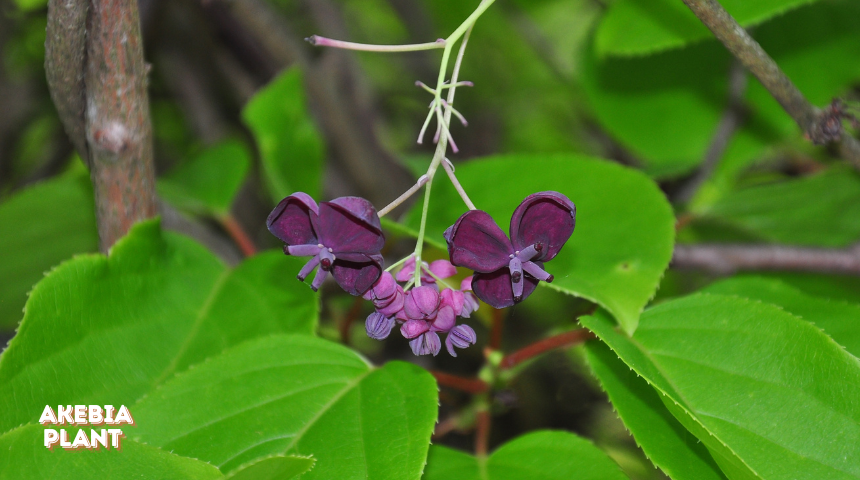
Train the vine gently using ropes or ties. Keep an eye on growth and adjust support as needed. Regularly water and feed to promote healthy growth and flowering. Enjoy the beauty and fragrance of your thriving Akebia vine!
Origin And Properties Of Akebia
Akebia originates from East Asia’s mountain forests, primarily found in China and Japan. It belongs to the genus Akebia and is known for its distinctive properties.
This vine boasts lush, dark green leaves that endure even through harsh winters. Its fragrant flowers, reminiscent of vanilla and chocolate, add a delightful aroma to any garden.
Additionally, the plant produces edible, cucumber-shaped fruits in autumn. Despite its slow growth, taking up to three years to develop dense foliage, Akebia is a rewarding addition to any landscape.
The Most Beautiful Varieties Of Akebia Quinata
Among the most beautiful varieties of Akebia quinata are those distinguished by their unique flower and leaf colors.
For instance, Akebia quinata ‘Silver Bells’ features creamy-white male flowers with dark purple stamens, accompanied by pink female flowers.
Meanwhile, Akebia quinata ‘Alba’ showcases both male and female flowers in striking white hues.
Additionally, Akebia quinata ‘Variegata’ stands out with white spots adorning its leaves, adding an extra layer of visual interest to this already captivating plant.
These varieties offer a range of colors and patterns, allowing gardeners to select the perfect Akebia quinata to complement their landscape.
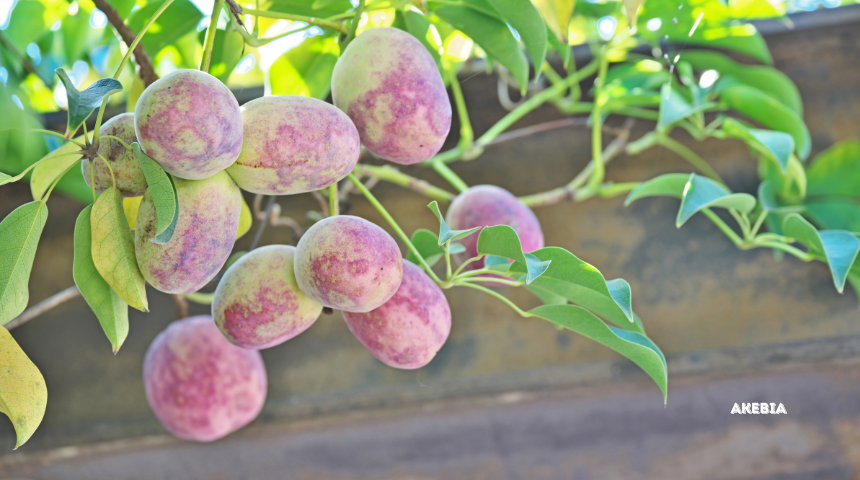
Where To Plant The Chocolate Vine?
Plant the chocolate vine in a location that receives ample sunlight to semi-shade. Ensure the spot is sheltered from strong winds.
While the chocolate vine originates from subtropical regions, it can tolerate various conditions. However, if temperatures drop below -10°C, protect the root area with foliage.
Choose sandy to loamy soil for optimal growth. Provide humus-rich soil to promote flowering. Spring planting ensures vigorous growth throughout summer and autumn.
For vertical growth against a structure, plant about half a meter from the wall. This allows sufficient space for root expansion.
When To Plant The Chocolate Vine?
Plant the chocolate vine in spring for the best results. This timing allows the vine to establish itself during the warmer months, promoting strong growth throughout the summer and autumn seasons.
By planting in spring, you give the vine ample time to acclimate to its new environment and develop a robust root system before colder weather sets in.
How to plant the chocolate vine?
To plant the chocolate vine, begin by selecting a suitable location in your garden. Choose a spot that receives ample sunlight to partial shade and is sheltered from strong winds.
Prepare the soil by ensuring it is well-draining and enriched with organic matter. Dig a hole that is slightly larger than the root ball of the chocolate vine.
Place the vine in the hole, ensuring that the top of the root ball is level with the surrounding soil. Backfill the hole with soil and gently pat it down to remove any air pockets.
Water the newly planted vine thoroughly to help settle the soil and encourage root establishment.
Finally, provide support for the vine to climb, such as a trellis or fence, and continue to water regularly to keep the soil evenly moist during the growing season.
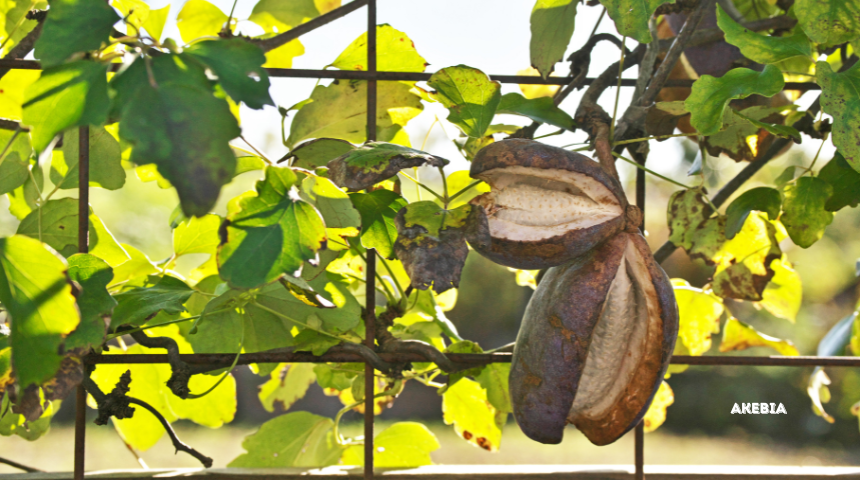
Planting Tips And How to Care Akebia?
For optimal growth and health of your chocolate vine, consider the planting tips and Caring for Akebia involves the following key points:
1. Pruning
Regular pruning helps maintain the shape and size of the vine, as well as promoting flowering. Prune in late winter or early spring before new growth begins.
Remove any dead or damaged branches, as well as any overly vigorous growth. Additionally, prune to control the size of the vine and to encourage branching.
2. Watering
Chocolate vines prefer consistently moist soil, especially during the growing season. Water deeply and regularly, ensuring that the soil remains evenly moist but not waterlogged.
Avoid allowing the soil to dry out completely between waterings, as this can stress the vine.
3. Fertilizing
Apply a balanced fertilizer formulated for flowering vines in early spring, just as new growth begins. Follow the manufacturer’s instructions for application rates and frequency.
Additionally, consider supplementing with organic matter, such as compost or aged manure, to provide additional nutrients and improve soil structure.
4. Support
Provide a sturdy support structure, such as a trellis, fence, or pergola, for the vine to climb. Train the vine to grow along the support using ties or twine, ensuring it has room to spread and flourish.
5. Monitoring
Regularly monitor the vine for signs of pests, diseases, or nutrient deficiencies. Address any issues promptly to prevent them from affecting the overall health of the plant.
Pests and Problems
When caring for Akebia, be vigilant for potential pests and problems that may affect its health.
1. Aphids: These small, sap-sucking insects can infest Akebia vines, causing stunted growth and distorted foliage. Use insecticidal soap or neem oil to control aphid populations.
2. Powdery mildew: A fungal disease that appears as a white powdery coating on the leaves, powdery mildew can weaken Akebia vines and affect flowering. Ensure good air circulation around the plant and remove affected foliage promptly. Apply fungicidal treatments if necessary.
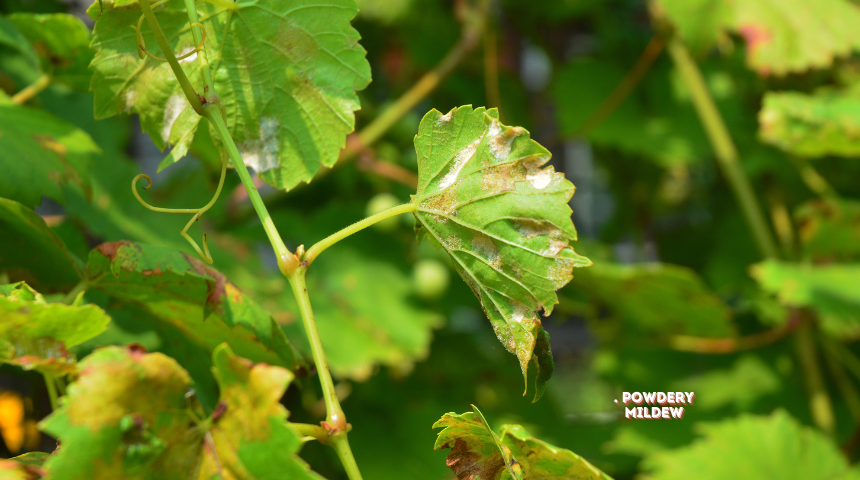
3. Scale insects: Scale insects can attach themselves to Akebia vines and feed on plant sap, leading to yellowing foliage and reduced vigor. Use a horticultural oil or insecticidal soap to control scale infestations.
4. Root rot: Overwatering or poorly-drained soil can lead to root rot in Akebia vines, causing wilting, yellowing leaves, and eventual decline. Avoid overwatering and ensure the soil has adequate drainage to prevent root rot.
5. Nutrient deficiencies: Insufficient nutrients in the soil can result in poor growth and yellowing foliage in Akebia vines. Test the soil regularly and amend it as necessary with fertilizers or organic matter to ensure optimal nutrient levels.
How To Propagate The Chocolate Vine?
To propagate the chocolate vine, you can follow these steps:
Seed Propagation: Collect ripe seeds from the vine’s fruits in autumn. Remove the pulp from the seeds and sow them in a pot filled with well-draining soil.
Keep the soil consistently moist and place the pot in a warm, sunny location. Germination may take several weeks to months.
Cutting Propagation: Take softwood cuttings from the vine in late spring or early summer. Choose healthy, non-flowering stems and cut them into 6–8-inch sections.
Remove the lower leaves and dip the cut end in the rooting hormone. Plant the cuttings in a pot filled with moistened potting mix and keep them in a warm, humid environment. Rooting should occur within a few weeks.
Layering: Select a healthy, low-growing stem on the vine and gently bend it down to the ground. Make a small incision on the underside of the stem where it touches the soil and dust it with rooting hormone.
Cover the incision with soil and secure the stem with a U-shaped pin or rock. Keep the soil consistently moist until roots develop, then sever the stem from the parent plant and transplant it to its new location.
Can Akebia Be Grown In Pots?
Yes, Akebia can be grown in pots, but it’s essential to choose a large enough container to accommodate its root system and provide adequate support for the vine to climb.
Select a sturdy pot with drainage holes to prevent waterlogging. Use a well-draining potting mix enriched with organic matter. Place the pot in a sunny to semi-shady location, sheltered from strong winds.
Regular watering is crucial to keep the soil evenly moist, especially during the growing season. Additionally, provide a trellis or support structure for the vine to climb.
With proper care, Akebia can thrive and beautify your patio or balcony in a pot.
Can you grow Akebia quinata from seed?
Yes, you can grow Akebia quinata from seeds or cuttings. Seeds are about five millimeters wide and can be sown in well-draining soil in early spring.
However, due to slow growth, propagating from cuttings is often preferred. Offshoots of the chocolate vine naturally form and root when they touch the ground.
By utilizing these methods, you can successfully propagate Akebia quinata in your garden.
FAQ
Can Akebia be grown in pots?
Yes, Akebia can be grown in pots, provided they are large enough to accommodate its root system and offer support for climbing.
When is the best time to plant Akebia?
Akebia is best planted in spring, allowing it to establish before the onset of colder weather.
How often should I water Akebia?
Water Akebia regularly, keeping the soil consistently moist, especially during the growing season.
Does Akebia require pruning?
Yes, regular pruning helps maintain the vine’s shape, control its size, and promote flowering. Prune in late winter or early spring.
Is Akebia bee-friendly?
While Akebia flowers may not contain nectar, they still attract bees with their fragrance and pollen, making them beneficial to pollinators.
Conclusion
In conclusion, planting and growing Akebia can be a rewarding experience for any gardener. By following the simple steps outlined in this guide, you can cultivate a thriving vine that adds beauty and fragrance to your garden.
Whether you choose to start from seeds or cuttings, or simply let nature take its course with offshoots, Akebia offers a delightful addition to any landscape.
With proper care, patience, and a touch of creativity, you’ll soon be enjoying the lush foliage and charming flowers of this versatile plant. Happy gardening!


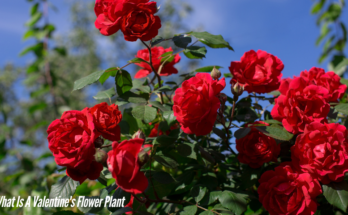
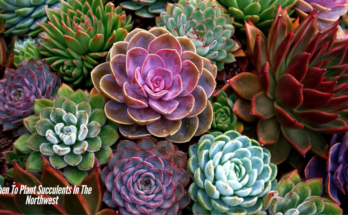
3 Comments on “How to Plant and Grow Akebia?”